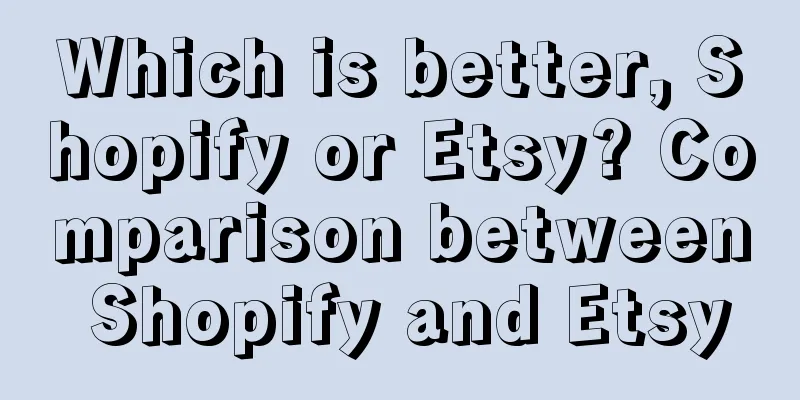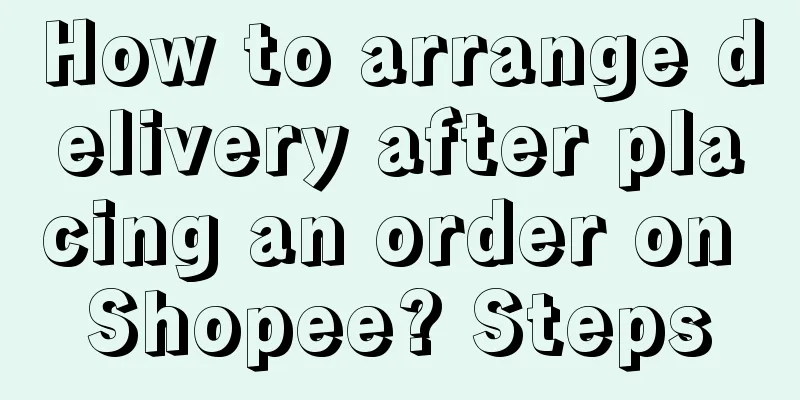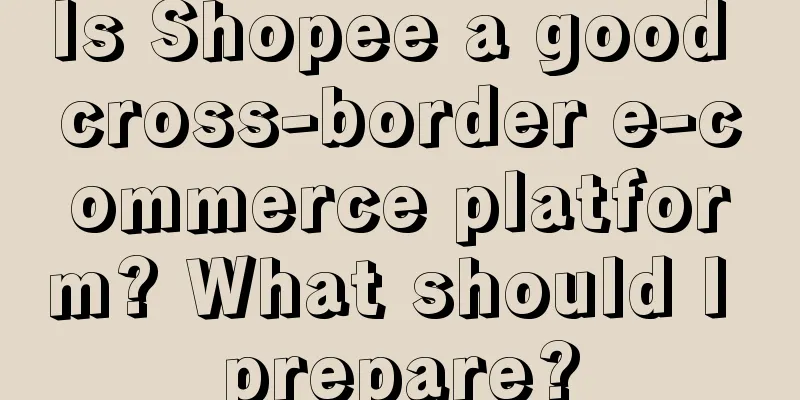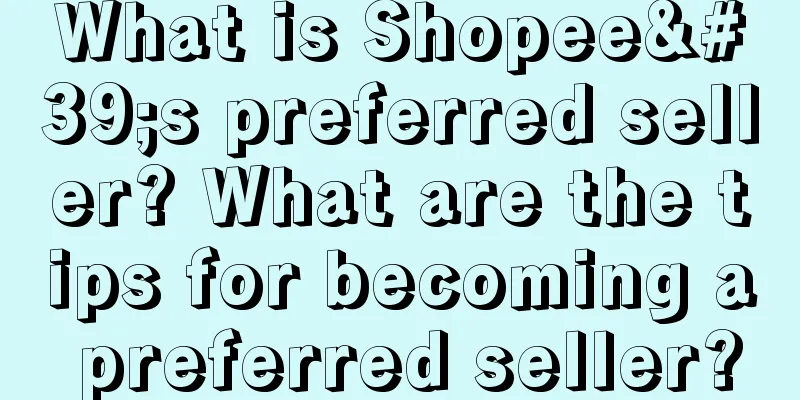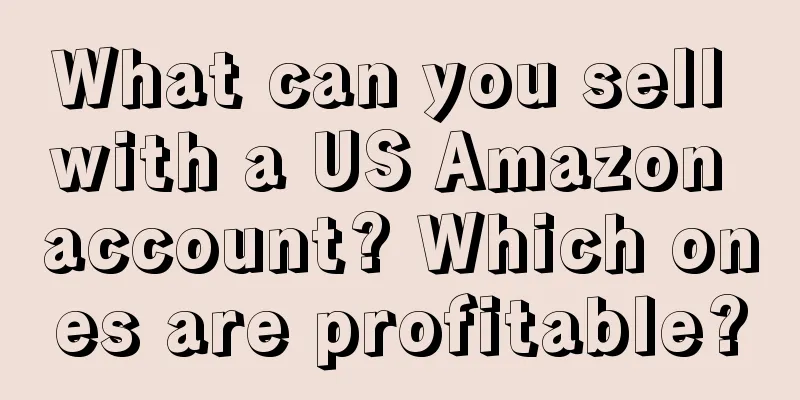The four steps of marketing copywriting

I remember that many years ago, Li Jiaoshou said: "Marketing is to achieve your goals by satisfying the needs of users." The same is true for marketing copywriting. Whether it is writing sales manuscripts, soft articles, or copywriting for product detail pages, as long as it is about selling goods, it basically follows the four-step marketing copywriting method. This view comes from "Best Copywriters". I got a lot of inspiration from this book, and I will share it with you below~ 1. Eye-catching titleIn today's era of information explosion, everyone receives a lot of information every day. If you want others to click to view your content, your title had better be eye-catching (of course, don't be a clickbait). What are some ways to make an eye-catching title? 1. News editorials: Almost everyone likes gossip and reading the news. If your headline uses the news format, it will arouse people's curiosity. For example, "This year, I started to understand Steve Jobs again" or taking advantage of social hot spots is also a common method. 2. Unexpected stories: The core is to create contrast. From a bad start to a happy ending, from common cognition to subverting cognition. For example, "from a small clerk with a monthly salary of 2,000 to a copywriter with a monthly salary of 50,000". 3. Surprise offer: The core is to attract customers with low prices. If the highlight of your product is the ultra-low price, you can try this trick. Title format: low price + best-selling + limited time and quantity, for example, "The copywriting course originally priced at 999 yuan is only 99 yuan for a limited time! The original price will return to the original price after 24 hours." However, this type of title should be used with caution, as it has a strong marketing feel. 4. Practical tips: The core is to hit the user's pain points. The title format is: specific problem + solution. For example, "Is writing copy awkward? Try the four-step marketing copywriting method." 5. Friends’ dialogue: The core is to bring readers closer and arouse curiosity. Title format: colloquial word + you + exclamation, for example, "Don't worry! I remember that on this day last year, I still hadn't found a job." Friends’ dialogue titles are the trend of current copywriting styles. The advantages are vivid images and weak marketing sense. It is recommended to use more. 2. Stimulate purchasing desireWhen users are attracted by the title and click on the product details, the next question they ask is “Why should I buy this?” Some readers may wonder, why do they want to buy something without knowing the reason? For a small number of customers with clear goals, their needs are very strong and they know what they want; but for most users, they may just come to browse and compare. Therefore, stimulating the desire to buy is a critical step. To stimulate the desire to buy, either create an ideal state or reveal the fear appeal. Here are some common methods: Category 1: Creating an ideal state1. Sensory occupation: If the product you sell can be expressed through the five senses, the ideal state conveyed to the user will be very vivid. For example, if you sell a facial mask, you can describe the touch, smell and psychological feelings (copywriting: "Tear off the thin mask and apply it to your face, and the tension and fatigue of the day will instantly dissipate in the air") 2. Cognitive comparison: If the product you sell is highly competitive and your product is unique, you can compare your advantages with the disadvantages of your competitors. This method is very common, such as Modao and Axure, new word memorization methods and traditional word memorization methods. 3. Usage scenarios: If the product you sell is relatively new and needs user education, it is best to include usage scenarios. For example, when Get launched the "Listen to a Book Every Day" product in the early years, there were basically no competitors in the market. At the product launch conference, Luo Pang listed several scenarios for listening to books in detail to help users identify the right scenario. Category 2: Revealing Fear Appeals1. Fear appeal: If the product you sell is more inclined to solve pain points, you can try this method. You can first poke the user's pain point, and then tell him that if the problem is not solved, it will bring unbearable consequences. For example, if you sell English training courses, you can explain to parents the harm of not starting English early. 3. Winning Customer TrustWhen the customer's desire to buy is stimulated, the next question the user asks is "Why should I buy from you?" This is actually about solving the problem of customer trust. Let's take a look at four common ways to build customer trust: 1. Factual proof: After you use product features to inspire customers to buy, you then need to prove that your product features are real. How to prove it? The first method is to collect performance data and then link it to familiar things. For example, when OPPO launched the highlight of "long battery life" in the early years, the advertising slogan used was "charge for 5 minutes, talk for 2 hours", which makes people understand it at a glance. The second method: When the function of a product cannot be directly proven, you can do various physical and chemical experiments to create obvious differences and indirectly prove the function of the product. For example, if you sell a whitening cream, you can compare the effects before and after use. 2. Authoritative endorsement: If your product is used by an authoritative organization or person, or has won an authoritative award, it can be used as a brand endorsement. Authoritative endorsement requires the creation of an authoritative "high status" that is of great importance in the industry, as well as the description of an authoritative "high standard" that demonstrates high difficulty. (In addition, if you can’t find an authority to recommend your brand, you can also describe which authorities agree with your product concept and indirectly support your product quality) 3. Customer testimonials: This is the most common way to build customer trust. The general practice is to select customer reviews and display them on the details page. However, it should be noted that the selected customer testimonials must hit the core needs of buyers. 4. Resolve concerns: Customers may have various concerns when purchasing goods, such as product issues (returns and exchanges), service issues (postage, installation services), privacy issues, etc. If you proactively raise the product issues, service issues, and privacy issues that customers may be concerned about and provide solutions, you can make customers feel more at ease. 4. Guide customers to place ordersAfter customers realize their needs and trust you, their next question is "Why buy now?" At this point, customers care most about the price, after all, they have to pay soon. You can use emotional cognition to push users: 1. Help users calculate: users can place an order only when value-price is greater than 0. If the price is too high, you can use price/days to make the price seem very low; 2. Help users save money: Tell users how much money they can save after buying and how long it will take to get their money back, so as to increase their desire to buy; 3. Set a price anchor point (anchoring effect): first mention a high price, then a low price, so that users will feel that they are getting a bargain. (If the prices of peers are all high, you can compare with other industries); 4. Limited time and limited quantity (loss aversion): Limited time means that the earlier you buy, the earlier you earn. Buy early to enjoy preferential prices, and buy later to get higher prices; limited quantity means setting a limited number of places, and the first few people will enjoy discounts, etc.; 5. Legitimate reasons (mental accounts): from personal enjoyment to legitimate reasons. Legitimate reasons include advancement, gifts, health, children, etc. People are often more willing to spend money for legitimate reasons. V. ConclusionTo sum up, the four steps of marketing copywriting are: eye-catching title—>stimulate purchasing desire—>win customer trust—>guide customers to place orders. In fact, this is not only the case when writing copy, but also when we do marketing. The question that needs to be solved is: why should I buy? Why should I buy from you? Why should I buy now? The above, I hope it can help you~ Reference book: "Best-selling Copywriting" - by Guan Jianming |
<<: Types of copywriting | The difference between new media copywriting and advertising copywriting
>>: How to develop a strong brand constitution
Recommend
How to fill in the delivery address on eBay? Any suggestions?
eBay is a relatively well-developed cross-border e...
Can Amazon personal stores place orders? How can I place orders quickly?
The development speed of the e-commerce industry i...
Full scale, more delicious than Zibo barbecue
Zibo barbecue has been all over the internet recen...
What is the Amazon blue badge? What is its function?
Many buyers on Amazon have discovered the existenc...
99% of brands cannot avoid these ten major anxiety disorders | Anti-anxiety special
Anxiety is a common psychological problem in today...
What should I do if a cross-border e-commerce company sends the wrong goods? What are the situations?
There are many merchants doing cross-border e-comm...
Does Meikeduo require working days to withdraw money? Introduction to withdrawal rules
When doing cross-border e-commerce business, merch...
What should I do if Amazon does not ship my order? Several reasons for not shipping my order
Some friends thought about it for a long time and ...
Olympic Spirit: The Resonance of Brand and Dream
In this globally watched sporting event, major bra...
In 2025, e-commerce players will also be "revamped" by Pang Donglai
As a benchmark for offline retail, Pang Donglai he...
What should I do if the Amazon investment manager does not give me a link? What does it do?
When many friends open a store on Amazon, they fir...
SaaS Customer Lifecycle and Operation Methods (Part 2)
In the SaaS Customer Lifecycle and Operation Metho...
Is it necessary to pay a deposit for Shopee activities? Detailed analysis
Most e-commerce platforms require merchants to pay...
Review of Women's Day marketing of 10+ brands including OLAY, SK-ll, Pure Cotton Times, lululemon, etc., revealing four major trends
Women's Day is an important node for women'...
Is it useful to promote products outside of Amazon after the new product period? When is the best time to promote products?
There are many merchants doing business on Amazon ...
